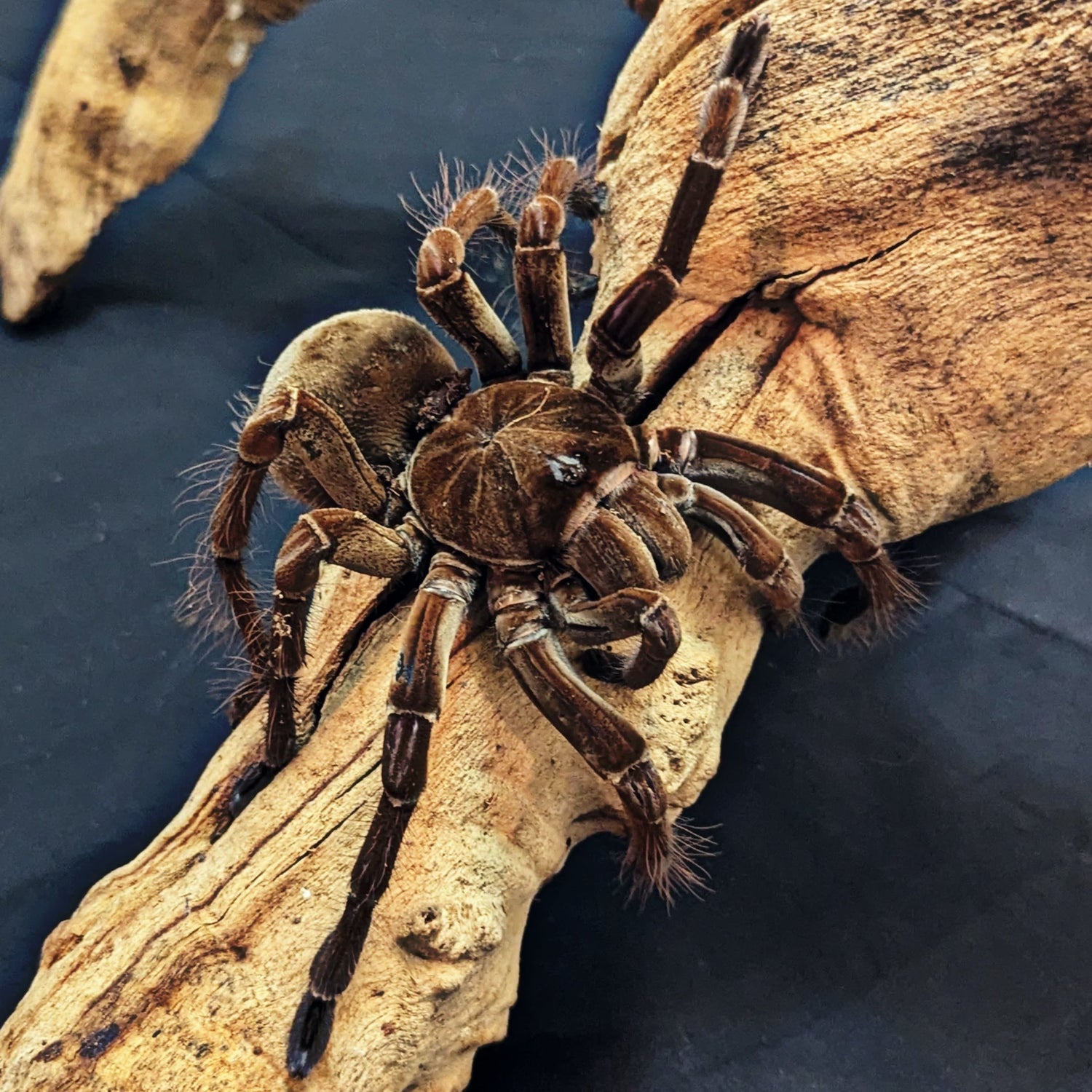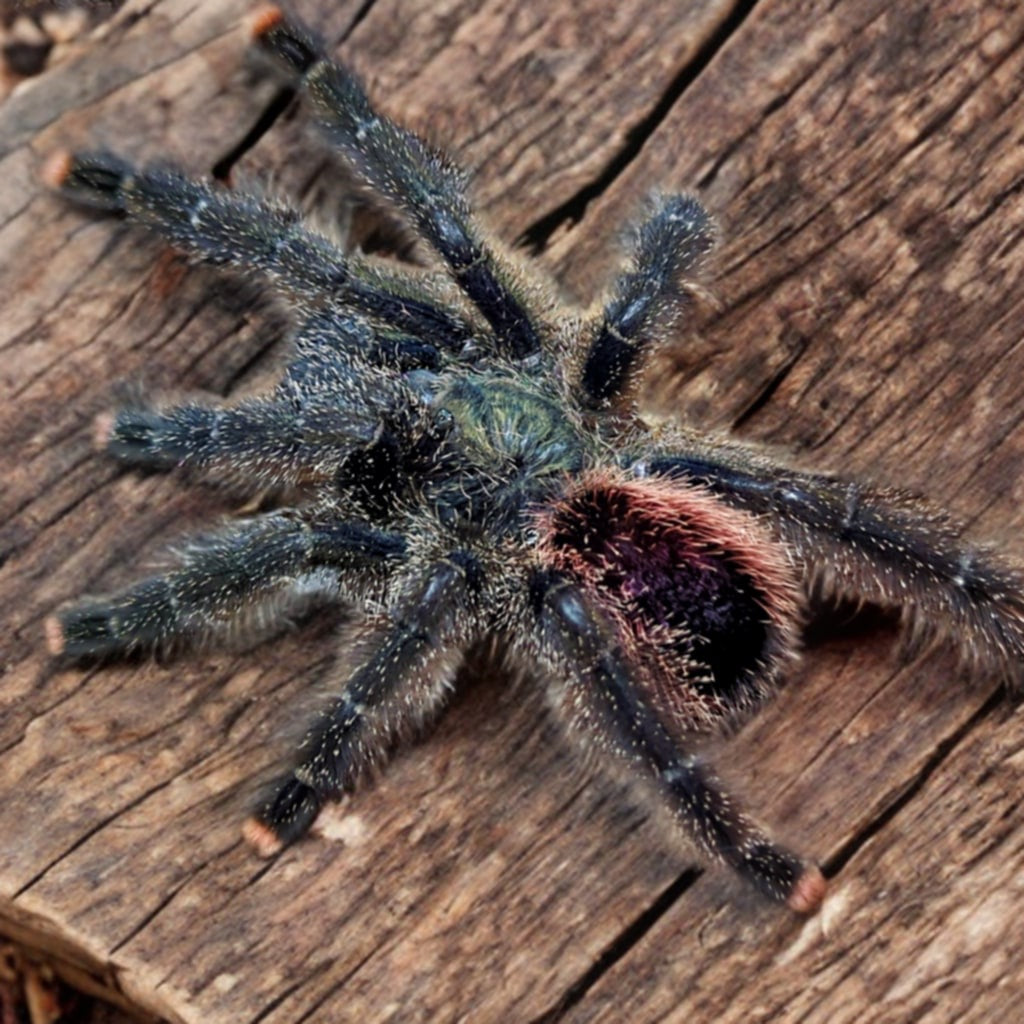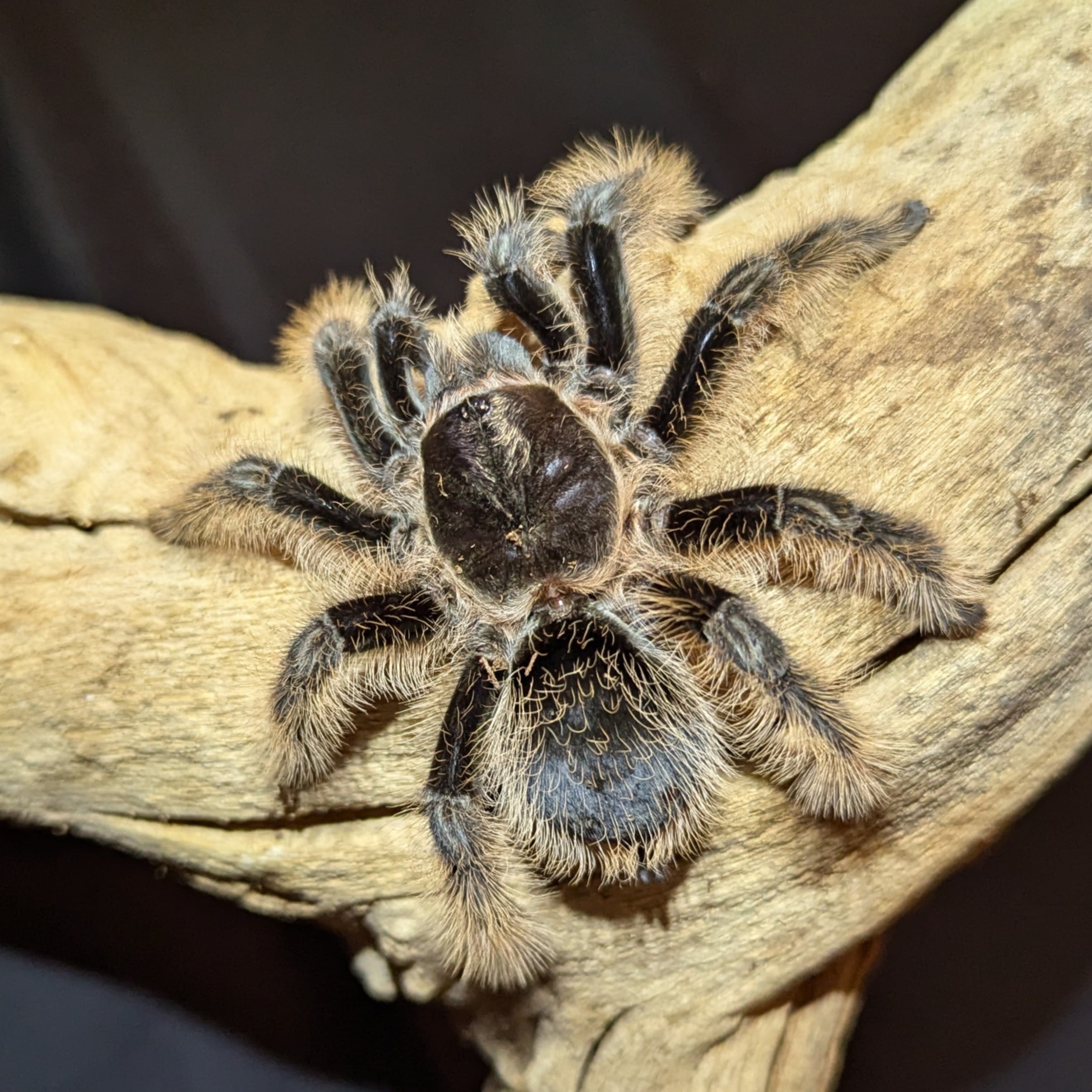Introduction
The Goliath Bird-Eating Tarantula, Theraphosa blondi, is one of the largest tarantula species in the world, native to the rainforests of northern South America. Known for its massive size and impressive appearance, this species requires a specialized setup and should only be kept by experienced hobbyists due to its humidity needs and defensive temperament.
Habitat Setup
An adult Goliath Bird-Eating Tarantula needs a large, secure enclosure—at least 18 inches long, 18 inches wide, and 12 inches tall. As a terrestrial burrower, it requires a deep substrate layer (5 to 6 inches) of moisture-retentive material like coconut fiber, peat moss, or organic soil. Maintain a temperature of 75-82°F and high humidity between 80-90%. Good airflow is essential to prevent mold, so balance ventilation with humidity retention. Include a large hide, such as a cork log or half-buried pot, and a wide, shallow water dish. Daily misting may be necessary to maintain proper humidity.
Diet
These tarantulas are voracious eaters and should be fed large prey such as adult dubia roaches, large crickets, and occasional pinky mice (as a rare treat, not a staple). Juveniles should be fed twice a week, while adults do well with one or two large meals weekly. Prey should be removed if not eaten within 24 hours to reduce stress and maintain cleanliness.
Shedding Care
Molting is a vulnerable period for Theraphosa blondi. Before a molt, the tarantula may refuse food, become lethargic, and spend time in or near its burrow. During this time, increase humidity slightly and avoid disturbing the enclosure. Do not offer food until a week after molting to allow the exoskeleton to harden.
Handling and Temperament
This species is not recommended for handling. It is highly defensive and may rear up, strike, or release urticating hairs when threatened. Their large fangs and strong musculature can deliver a painful bite, although it is not medically significant. Interaction should be limited to enclosure maintenance and observation.
Health and Maintenance
Keep the enclosure clean by removing uneaten prey and spot-cleaning regularly. A full substrate change may be needed every 6-12 months. Mold and mites are common issues in high-humidity environments, so monitor closely. Proper ventilation and substrate maintenance are critical to prevent health problems.
Conclusion
The Goliath Bird-Eating Tarantula is a powerful and impressive species best suited for advanced keepers. With precise humidity, a spacious enclosure, and minimal handling, Theraphosa blondi can thrive and become a captivating centerpiece in any serious tarantula collection.




Leave a comment
This site is protected by hCaptcha and the hCaptcha Privacy Policy and Terms of Service apply.